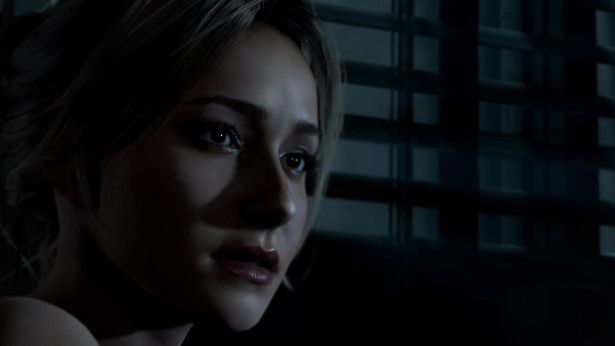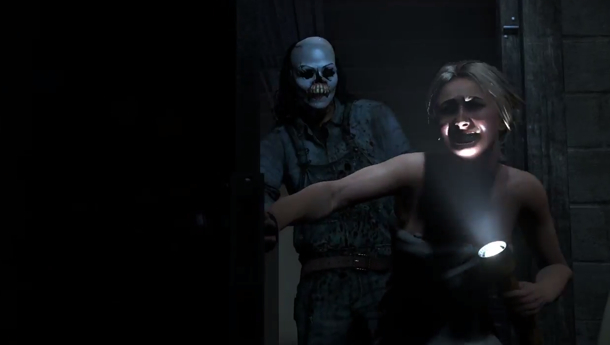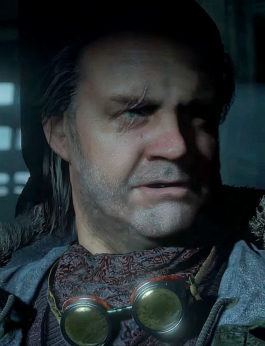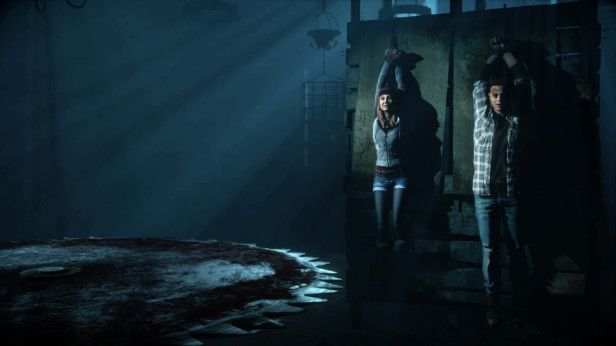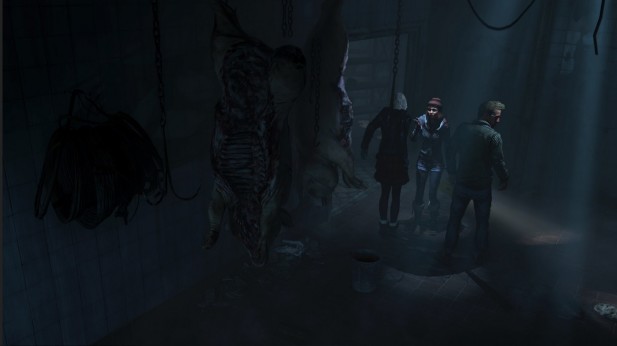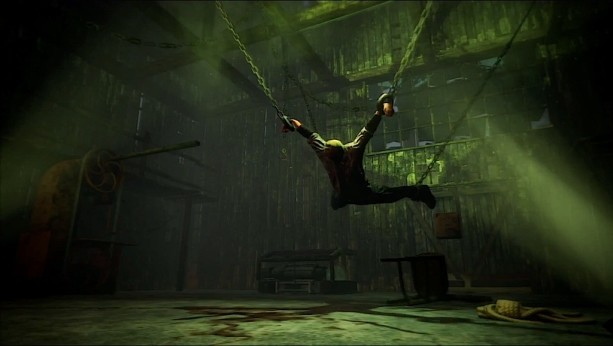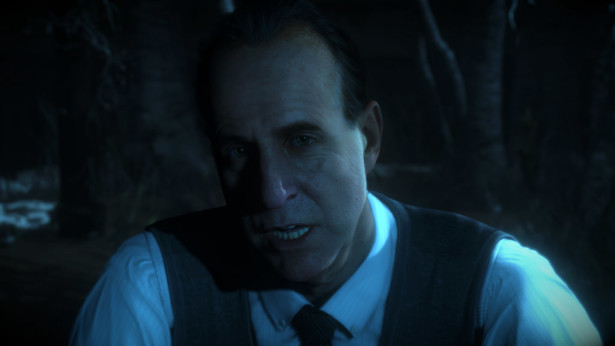Until Dawn
Larry Fessenden & Graham Reznick (2015 Playstation 4, Supermassive Games, Horror/Adventure)
Hayden Panettiere, Peter Stormare, Rami Malek, Brett Dalton, Meaghan Martin, Larry Fessenden

When 8 friends become trapped on a remote mountain getaway gone wrong, things quickly turn sinister and they start to suspect they aren’t alone. Gamers are forced to make snap decisions that could mean life or death for everyone involved.
Until Dawn is a damn near perfect game, which just breathes horror on every level. The game puts you in control of a group of teens and terrifies you while doing so. This is a must have if you own a PlayStation 4.
Until Dawn succeeds on so many levels of story telling and creates this amazing interactive survival horror experience.
If you are opened minded to a non-traditional gaming experience and enjoy horror games and/or movies, I would highly recommend giving Until Dawn a try.
Until Dawn takes Heavy Rain’s mechanics and refines them, adding a delicious horror sauce and going to town with the result. It is absolutely brilliant in every conceivable way.
Until Dawn is everything that Quantic Dream games have tried to be – unsuccessfully – for the past decade. It emulates horror movies while demonstrating a clear understanding of what makes those movies work, its focus on consequence is nervewracking and intricate, and its story is silly but strongly delivered. It’s the best David Cage game not made by David Cage, and it’s the best interactive horror flick you’ll play.
Bloody Disgusting
Adam Dodd 9/8/15
‘Until Dawn’ Review: Murder House
This is an exciting time to be a fan of the slasher genre. For film geeks, the real fun starts next year with the release of a new Friday the 13th, as well as Halloween Returns and Leatherface. For gamers, it began with the arrival of Until Dawn, Supermassive Games’ PS4-exclusive teen stab ’em up, along with the games that are planned to follow it, including Summer Camp, Last Year and a Friday the 13th game.
Being the first of the pack, Until Dawn had a lot to prove. It also had quite a lot going against it, with it’s being a brand new IP, locked to a single platform, from a studio most people aren’t yet familiar with. It didn’t help that, for some reason, Sony didn’t quite give it the marketing push I would have expected them to.
This may be why this game feels like such a victory. Because it is, both for the legions of folks like us who enjoy watching people run from knife-wielding maniacs on-screen, and for Supermassive Games, who has managed to bring the macabre appeal of a genre that has enraptured generations of moviegoers for roughly half a century and counting.
There might not be a new face to add to the pantheon of movie icons like Freddy Krueger, Jason Voorhees, Michael Myers and Ghostface, but Until Dawn doesn’t need to rely on the uniqueness of its antagonist. What this game accomplishes, it does so with a rich cast of characters, a remarkable use of music and a slow build-up of tension, dread and suspense.
It’s impossible not to compare this game to Quantic Dreams’ similarly themed “interactive movie” and Indigo Prophecy spiritual successor Heavy Rain. Both games feature branching storylines that are affected by the player’s decisions, a focus on delivering a cinematic experience rather than a conventional “video game”, and a bad dude who seems to be channeling Tobin Bell’s Jigsaw.
The difference lies in their execution. As much as I enjoyed Heavy Rain, Until Dawn is like its freakier, more sinister older brother who spends too much time in the forest giddily digging through the bloated remains of felled woodland critters. It controls considerably better, isn’t afraid to lean on the slow-burn approach to horror, and while I preferred the pacing of Heavy Rain, Until Dawnmakes up for its uneven narrative by introducing familiar ideas that ratchet up the intensity.
One of these familiar ideas are the Totems. This system had a grander impact on my experience than I ever thought it would. For the unfamiliar, scattered about the world are Totems that serve as prophecies based on five things: Death, Guidance, Loss, Danger and Fortune.
The Death, Loss and Danger Totems bring a Final Destination flavor to the game as they each tease a potential end to the person who found them, the death of another character, and the threat of imminent danger, respectively. Guidance can offer life-saving hints regarding future decisions, like which character should get a specific item that may save their life later on, and the rare Fortune Totem is like getting some good news after enduring a torrent of bad news.
For the stubborn players who need another incentive for collecting them all, each Totem also uncovers a small portion of a censored video that explains more of the surprisingly complex backstory.
Like a good survival horror game, exploration is key. In addition to the potentially life-saving Totems, hidden all over the world are items that shed light on the identity of the murderer who’s cock-blocking these poor teens, an unsettling event that transpired more than half a century earlier, and much more.
When you’re not exploring the stunningly beautiful world Supermassive built for us, expect to be making decisions. Each choice you make has an effect on the story. It can be something small, like building trust with the other characters, or something bigger, such as choosing a riskier option over a safer one that could — and will — mean the difference between life and death.
The personalities that make up the cast of Until Dawn are refreshingly unique. Each character feels like an actual person, with their own strengths and weaknesses. Some are more likable than others, but that can change fairly easily. The characters are “human” enough that even the ones I had decided would be my meat shields, if necessary, had the potential to surprise me.
When it comes to how liberal this game is with its gore, I’d say it sits somewhere between the Sawand Hostel films in what it’s willing to do to its protagonists. There’s plenty here to satiate Gorehounds, with endless opportunities for bone-shattering falls, fatal animal attacks, Saw-like death contraptions, obligatory games of hide and seek and the occasional deadly chase sequence.
Between exploration, making critical choices, balancing delicate relationships, heeding the warnings provided by Totems and working to find out just what in the hell is going on here, Until Dawn is able to keep from ever growing stale.
Then there’s the Analyst. I’m not at all surprised that Peter Stormare was as impressive as he most certainly is in his portrayal of the wonderfully bizarre psychiatrist Dr. Hill, but he really knocks it out of the park. I might even say he’s my favorite thing about this game.
Not content to just borrow from films, Supermassive took a page from the book of the woefully underrated Silent Hill: Shattered Memories — not to be confused with the not-worth-rating Book of Memories — but he resonated with me more deeply than I ever thought he would.
Until Dawn employs the Alan Wake approach to its narrative structure, which is episodic, complete with recaps of what happened in the previous chapter. Nestled between each of these chapters are brilliant, albeit brief, moments with the antagonistic Dr. Hill that involve answering simple questions. What these sometimes fourth wall-breaking sessions have to do with the game isn’t immediately clear, but the specifics are worth discovering on your own.
Quick-timed button presses are all over the place, and an alarming number of them made me worry about my reflexes. It didn’t bother me too much that they were so unforgiving in the time you’re given to react, but I’m also a heartless bastard who doesn’t mind watching a character I’ve grown to like having around meet a gruesome end because I couldn’t hit the triangle button fast enough. If that bothers you, you have been warned.
Weirdly enough, a few of the clearly unimportant QTEs I mucked up would wind up bothering me the most. When I failed to return Josh’s high five after a small victory, the look on his face left me feeling lousier than any of the many, many times I’ve embarrassed myself in exactly that same manner in real life.
Until Dawn isn’t perfect, though I’d understand if you thought it was based on all of the above. There are minor technical issues, including better-than-expected controls that still have room for improvement. The overabundance of jump scares had a tendency to get annoying and a few of the plot twists were too obvious for their own good. Thankfully, the large majority of these problems didn’t do much to detract from the overall experience.
The Final Word: Until Dawn is the most fun I’ve had with the slasher genre since Scream 2, and it accomplishes this while remaining true to its roots in survival horror. Be afraid. Be very afraid.
BAFTA AWARDS
Games | Game Innovation in 2016
Everybody’s Gone to the Rapture
Her Story
Metal Gear Solid V: The Phantom Pain
Life is Strange
Until Dawn
Splatoon
Games | Original Property in 2016
Everybody’s Gone to the Rapture
Ori and the Blind Forest
Life is Strange
Splatoon
Her Story
Until Dawn
Games | British Game in 2016
Everybody’s Gone to the Rapture
Batman: Arkham Knight
Prison Architect
Tearaway Unfolded
Until Dawn
Her Story
Games | Story in 2016
Everybody’s Gone to the Rapture
Life is Strange
Until Dawn
Undertale
Her Story
The Witcher 3: Wild Hunter
PCGamer
Alexander Chatziioannou Oct 11, 2024
Something magical happened in 2015. Prior to Until Dawn’s original release, nearly every attempt to produce a genuinely compelling interactive movie (an ideal games had been pursuing for decades) would invariably fall in one of two categories: either a noble failure or a spectacular one. And then, almost inconspicuously, Supermassive made it happen. The irony is it didn’t need much to improve upon the schlocky FMVs of the 1990s, just a tech upgrade and some better-written dialogue. Oh, and attach its ambitions to the single cinematic genre that perfectly complements the idiosyncrasies of an interactive medium: the teen slasher.
Nearly a decade later, we’re finally able to experience all the grisly murders and bickering on PC, in a new, remastered version featuring a visual overhaul and some slight narrative additions.

Eight high-school friends arrive at a remote mountain lodge on the anniversary of a tragedy that drastically changed their lives—most of all Josh’s, their host and scion of famed horror director, Bob Washington. It’s a gathering meant to heal old wounds and reinvigorate waning relationships. In other words, a search for closure. But familiar bitterness resurfaces and new causes for antagonism emerge in the group’s ever-shifting social dynamics as the reunion starts under the worst auspices.
Blackwood Mountain itself seems inimical to the kids’ presence: heavy snowfall obscures their surroundings, the path is pockmarked with deadfalls, and even the front door to the Washington mansion has frozen shut as local wolves and stags become increasingly restless at the intruders’ presence. And that’s before the real dangers start revealing themselves in forms both otherworldly and chillingly mundane. Taking control of a different character per scene, I have to keep as many of them alive (if not necessarily friendly with each other) through an increasingly nightmarish ordeal.
Supermassive’s triumph, where so many other studios had previously failed, rests on two key design choices. The usefulness of the multi-protagonist setup, especially when deprived of a manual save option, is that even the simplest action carries an air of finality—characters may die at any moment, permanently and irrevocably. And the brilliance of aligning this with the narrative trappings of the venerable teen-slasher genre is that the endless body count accumulated in sequel upon sequel of Friday the 13th, Halloween and A Nightmare on Elm Street has conditioned us to accept such deaths as natural parts of the story. Whereas in Quantic Dream’s emo procedurals losing a character registers as a fail state, here it feels inevitable, desirable even—a shiver-inducing reminder of what the stakes are for those still trying to survive.
The kids are alright
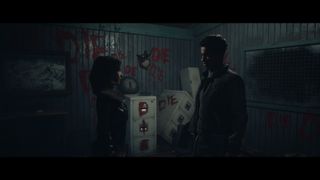
Nonetheless, for all their bickering and pointless intrigue, it’s a likeable enough bunch that I’d prefer to keep most of them alive. To achieve that, it’s vital I make the right decisions at key moments based on various bits of information scattered around the lodge environs and good ol’ common sense, as well as respond in a timely manner to the tense QTE sequences that pop-up during chases, violent confrontations, and other potentially dangerous situations.
Both types of challenge feel better balanced than in other Supermassive releases. Life-or-death dilemmas, for example whether to hide or keep running from a bloodthirsty pursuer, may seem arbitrary at first, but a thorough survey of my surroundings and heeding the premonitions triggered by totems discovered off the beaten path would typically guide me true. Even when an unfortunate choice led to a character being summarily slaughtered (RIP, Jess), looking back I always realised there were enough contextual clues to have made the right call. And, for once, QTEs are perfectly implemented: mercilessly-timed (especially compared to The Quarry where they were almost perfunctory) so I could never let my guard down but never veering into unfair territory, nor plagued by the bugs that ruined numerous such sequences in The Dark Pictures Anthology.
Of course, for any of these perilous situations to register as meaningful, for the player to become invested in the gang’s continued survival, the game must first make you care for them. Until Dawn succeeds at that, largely due to Graham Reznick and Larry Fessenden’s spirited writing and nuanced characterisation. What initially seems like a collection of traditional high-school archetypes (Matt, the pushover; Ashley, the nerd, Emily and Jess vying for the queen-bee spot, that is, once they run out of people to bully) acquires layers of complexity the longer you spend with each of them.
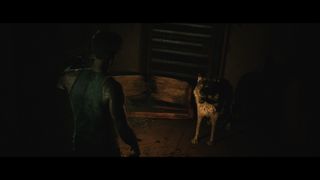
Mike’s caring nature clashes with his jock credentials. Sam remains the moral compass of the group throughout but will lose her patience on occasion. And Josh, well, his inner demons need a whole chapter to themselves. It’s in nudging these characters to evolve and shaping their relationships that the joys of Until Dawn lie, just as much as the jump scares and the elation of getting through a seemingly hopeless encounter unscathed—the perfect mesh of a high-school soap and a horror movie, that is, the quintessential teen-slasher experience.
All of which pertains as much to the PS4 original as this latest remake. For people that have already played Until Dawn there’s scarcely enough here to justify the price—a visual overhaul, a few new scenes that don’t add substantially to the story, a new soundtrack that has caused a furore among fans (for my part, I’m always happy for more of Purity Ring’s gloomy pop). Moreover, there’s a ton of technical issues, the more critical of which (like freezing submenus and corrupted save files) seem to have been addressed. Countless minor annoyances remain, however: the need to link to an active PSN account; sound turning off and subtitles desyncing at random; character models vanishing, leaving floating scarves and beanies in their stead; QTE prompts sticking on your screen long after the relevant sequence has passed.
Still, the interactive-movie formula is so elegantly implemented, with such obvious passion for the genre and awareness of its conventions, that these irritations fade into the background with the next chase sequence, the next bust-up over the silliest of reasons among former buddies. Until Dawn on the PC may not represent a significant upgrade on the original but still provides a delightful eight hours of the scariest teen-horror has to offer: cannibal mutants, maniacal stalkers, and—worst of all—your bestie’s ire.

HAYDEN PANETTIERE – Started her acting career in soap operas when she was a child, to eventually progressing into her film career with movies such as A Bug’s Life, Remember the Titans and Joe Somebody. She is also known for her roles in television series Heroes and Nashville.

PETER STORMARE – Swedish actor known for the ability to play different nationalities such as an American in The Lost World: Jurassic Park, a German in The Big Lebowski, an Italian in The Brother’s Grimm and Prison Break, a French in Chocolat, and a Russian in Armageddon, Bad Boys II, and Deadly Code.

BRETT DALTON – San Jose actor best known for his role in Marvel comics television series Agents of S.H.I.E.L.D.

RAMI MALEK – Actor best known for his roles in Night at the Museum, Night at the Museum: Battle of the Smithsonian, and Night at the Museum: Secret of the Tomb. He is also starring in the television series Mr. Robot.

MEAGHAN MARTIN – Actress known for her roles in Camp Rock and Mean Girls 2. As a child, she worked consistently in a variety of national and international commercials, including Barbie and Cabbage Patch Dolls.

GALADRIEL STINEMAN – Her first roles included Junkyard Dog, a recurring role on True Blood, and Cartoon Network’s live action movie Ben 10: Alien Swarm. She is best known for her role in television sitcom The Middle.

NICHOLE BLOOM – An actress known for her role in Model Minority and Project X. Before she was booked for those two features, she had done commercial work and modeled for American Apparel.

JORDAN FISHER – An actor from Alabama. Known for his roles in Teen Beach Movie and Teen Beach 2.

NOAH FLEISS – An actor known for his roles in Joe the King, Brick, and Taking Chance.

Supermassive Games – (Creators) An independent development studio based in Guildford in the south east of England working on games intended for a variety of audiences.

Larry Fessenden – (Writer) Legendary filmmaker who brought us indie gems such as Habit, Wendigo and The Last Winter, ventures into the world of gaming by writing for the hit Playstation 4 game, Until Dawn.
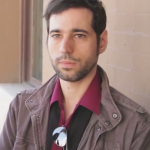
Graham Reznick – (Writer) Glass Eye pal and visionary filmmaker behind the creepy and trippy film I Can See You; joins Fessenden in writing for the new Playstation 4 hit game, Until Dawn.


